(Mortuary Temple of Ramses III)
by Connie Tindale
Location:
Attraction:
Cost:
Opening Hours:
Ramses III reigned Egypt for 31 years (1184 -1153 BC)
and like many pharaohs before him was a prodigious builder. As well as greatly enlarging the
Medinet Habu (Habu's City) to become his mortuary palace, he built the wonderful Osiris
courtyard in Karnak temple.
The Medinet Habu was a sacred site long before Ramses III
started building there. It was a revered part of the creation myth and was believed to be
where the Ogdoad (eight primeval gods) placed the egg from which the sun came, but Ramses'
works made it the most beautiful of the Theban sites. The temple, which is of a similar
design to the Ramesseum, is second in size only to Karnak but has a grace and symmetry that
Karnak lacks. It was not just a mortuary temple as it incorporated Ramses' palace where he
lodged on his visits to Thebes, his pleasure rooms where he entertained his harem, his
government offices, a sacred lake and a Nilometer which measured the rise and fall of the
river. The outer walls of the temple are also finely decorated and a mud-brick wall surrounds
the whole complex.
Ramses III was the son and heir of Sethnakht who became
the first King of the 20th Dynasty. Sethnatkht's path to the throne is unclear. It is
possible that there was a family relationship between him and Ramses II, but it is just as
likely that he grabbed power when the opportunity arose just as Ay and Horemheb had
before him. Ramses made his own claim to the throne clear by having the words "I did not
take my office by robbery, but the crown was set upon my head willingly" inscribed on one
of the temple pylons.
During his long reign, Ramses III fought several campaigns
including the battle with the sea peoples, which is shown on the walls of inner walls of the
first pylon. However, even in peaceful times there was wide spread corruption and internal
strife in Egypt. This unrest might have led to the harem plot, which occurred later in his
reign, when several of his ministers and his wife Ty aimed to have him assassinated during
the Opet festival celebrations, intending to make Ty's son king. Despite the wide use of
magic and spells, the plot appears to have failed as the culprits were caught and forced to
commit suicide, but as Ramses appears to have died before their trial was complete, who is to
say that they did not succeed in killing him after all. He was buried in the Valley of the
Kings (KV 11) in an elaborate tomb that was initially intended for his father.
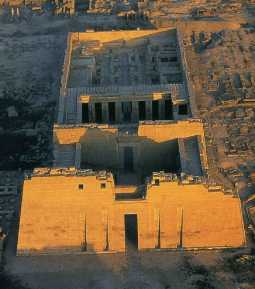
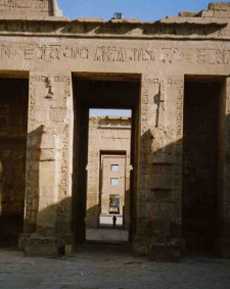
Before entering the mortuary temple visitors pass under
the windowed gateway where Ramses had his pleasure rooms and enter an open space which was
once a magnificent garden. Facing, is the deeply carved first pylon, which shows Ramses
fighting imaginary battles against the enemies of Egypt but on the inner walls are scenes
of battles that he really did fight and win. To the right of the gateway is the temple
that Hatshepsut built and on the left is the temple of the Divine Adoratrix, which was
added at a later date.
Inside the first pylon is a large open courtyard, and on
the northern side stands rather fat-legged statues of Ramses in the form of Osiris with
wives at his feet. Unfortunately, many of these statues were removed to make way for a
Coptic Church, which remained inside the temple until the nineteenth century.
In the second courtyard, a series of reliefs show scribes
completing a tally of the dead after a battle with the Libyans. This series is interesting
as it starts with the counting of hands, which confused the issue as each enemy had two,
and finishes by counting penises of which they only had one.
At the rear of this second courtyard is an enclosed
columned area where the decoration is entirely religious and very colourful. The ceilings
here are finely painted and the show many illustrations of Ramses offering gifts to the
gods. Ramses, who had learned from experience that the names of out-of-favour gods and
Pharaohs were easily obliterated, made sure that names carved in his temple were
exceptionally deep. Some were defaced but most were plastered over with mud during
the Coptic era rather than being destroyed.
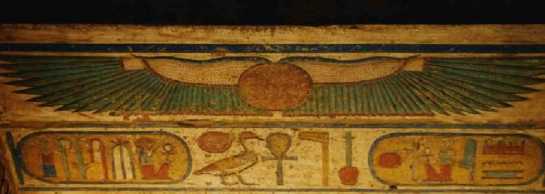
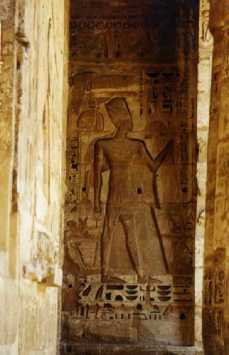
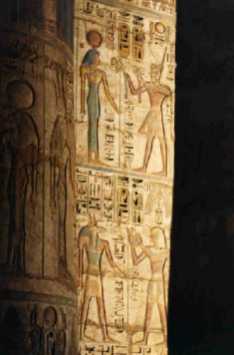

|
|













